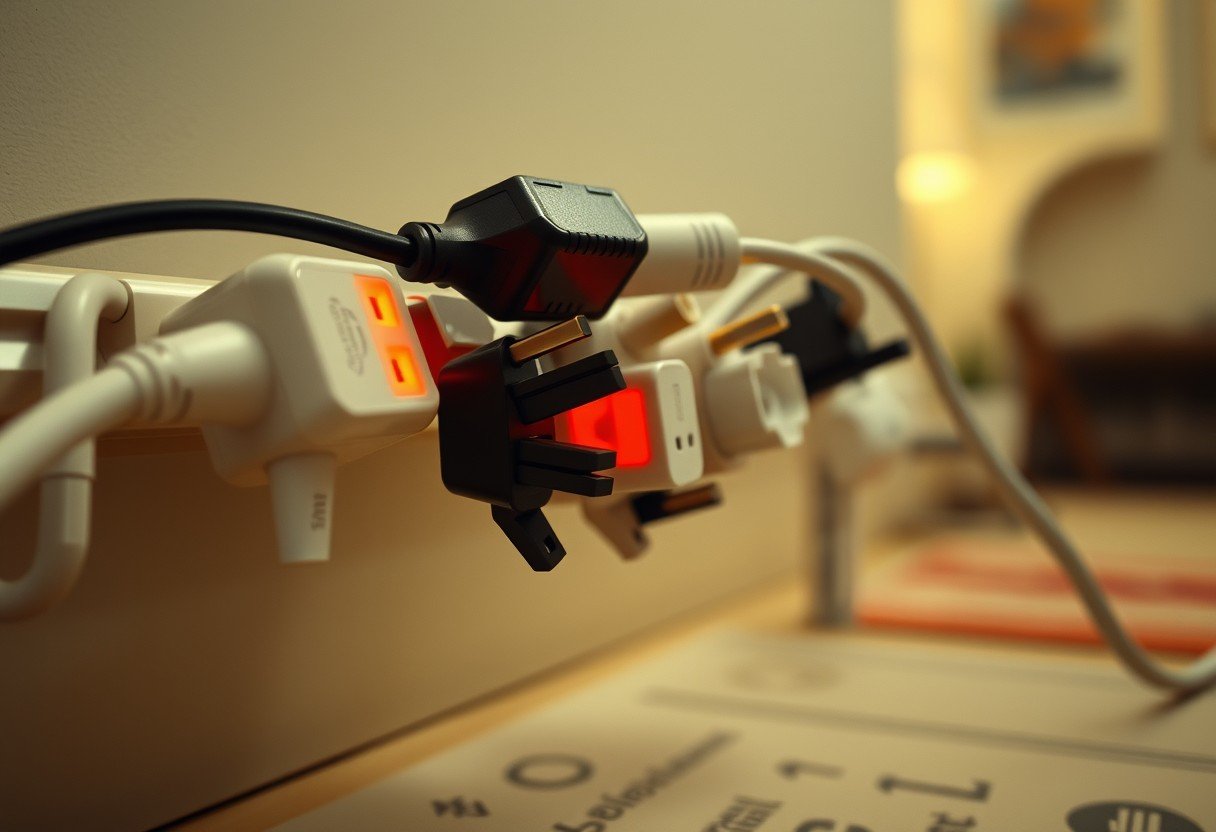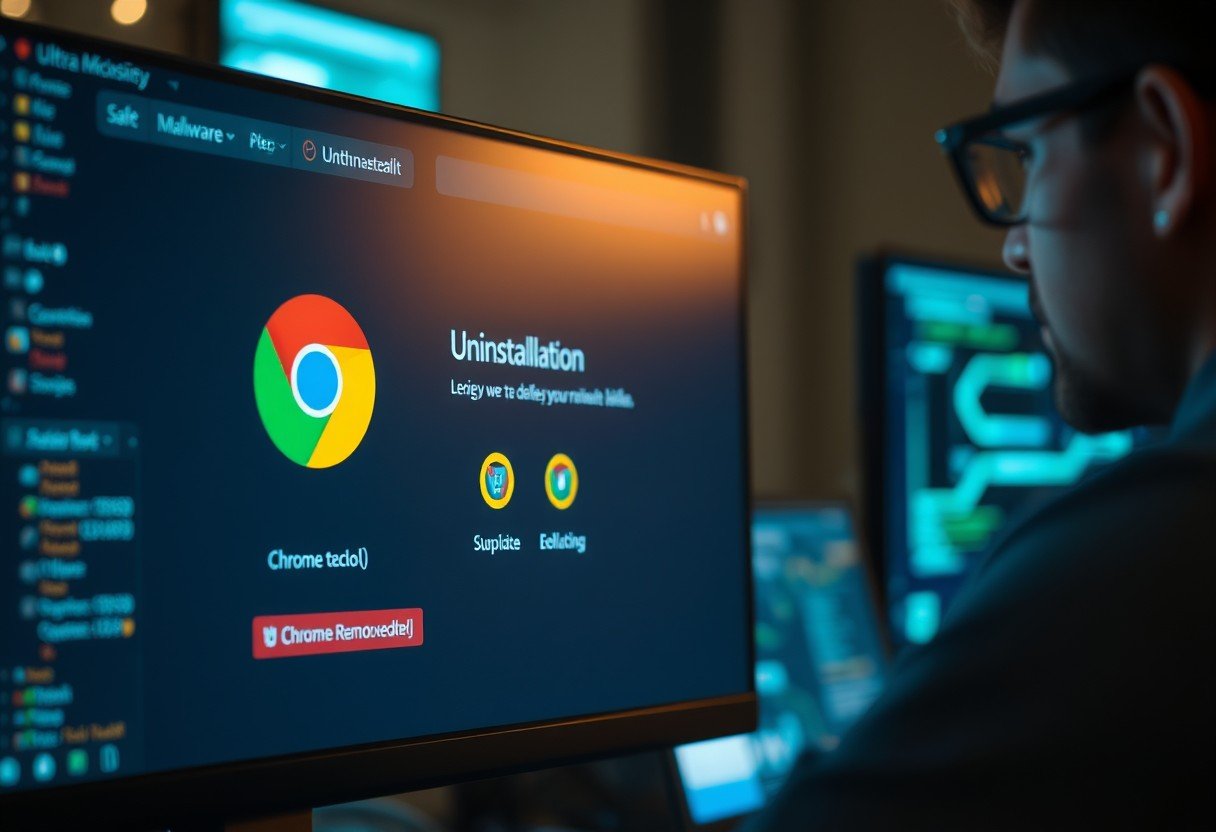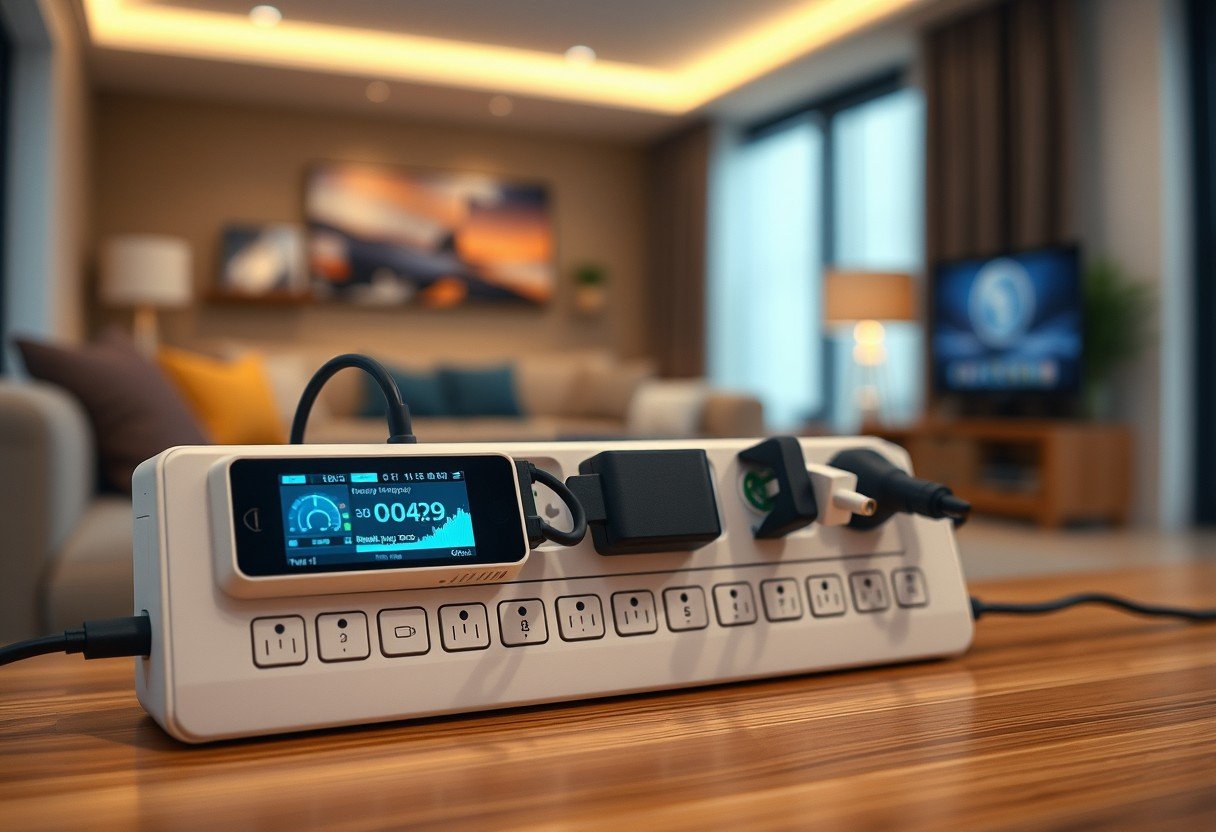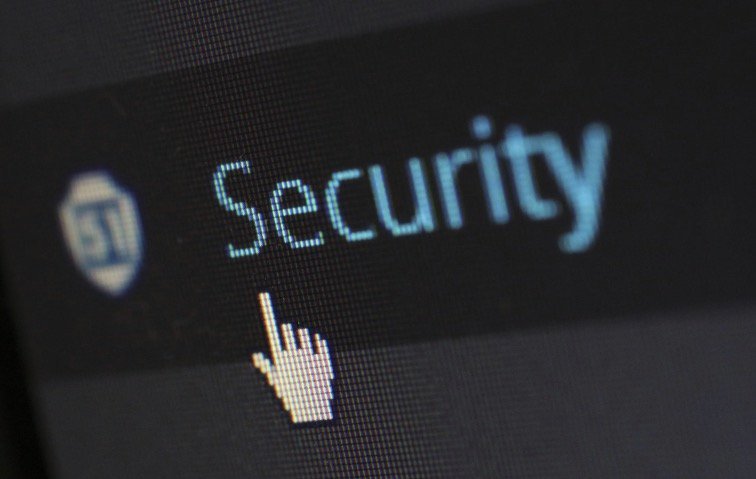Overloading an extension cord is a common household mistake that can have devastating consequences. It happens when you plug in devices that draw more electrical power than the cord is designed to handle, leading to overheating and potential fires. Understanding your extension cord’s limits is the first step toward using it safely and protecting your home, devices, and family from preventable electrical hazards.
Understanding the Basics of an Extension Cord’s Power
Every extension cord has a specific capacity for how much electricity it can safely carry. This capacity is determined by a few key factors, primarily its amperage (amp) rating and the thickness of its wire, known as the gauge.
Amperage measures the flow of electricity, and each cord is rated for a maximum number of amps. The wire gauge is also crucial; a lower gauge number means a thicker wire that can handle more power. For example, a 12-gauge cord is more powerful than a 16-gauge cord.
Always check the packaging or the cord itself for its specific ratings before use. Using a light-duty cord for a high-power appliance like a space heater is a common cause of overloading.
| Wire Gauge | Amperage Rating (Typical) | Common Uses |
| 16-Gauge | 10-13 Amps | Lamps, clocks, light-duty devices |
| 14-Gauge | 13-15 Amps | Power tools, vacuum cleaners |
| 12-Gauge | 15-20 Amps | Major appliances, heavy-duty tools |
How to Calculate Your Extension Cord’s Load Safely
You don’t need to be an electrician to figure out if you’re about to overload a cord. A simple calculation can keep you safe. The key is to find the wattage of each device you plan to plug into the cord.
You can usually find the wattage printed on the device’s label or in its user manual. Add up the total wattage of all devices. This total should never exceed the wattage rating of your extension cord.
If you can’t find the wattage, you can calculate the amps. Use the formula: Amps = Watts ÷ 120 (for standard U.S. voltage). Add up the amps for all devices and make sure the total is less than the cord’s amp rating. For safety, it’s best to stay about 20% below the maximum rated load.
The Dangers of an Overloaded Extension Cord
Pushing an extension cord beyond its limits creates a dangerous situation. The primary risk is overheating. As too much current flows through the wires, they generate excess heat that can melt the cord’s plastic insulation.
Once the insulation is compromised, the live wires can touch, causing a short circuit and potentially igniting nearby materials like carpets, curtains, or furniture. According to the U.S. Consumer Product Safety Commission, extension cords are responsible for thousands of residential fires each year.
Beyond fire hazards, overloading can also cause permanent damage to your expensive electronics. The unstable power flow and voltage drops can harm sensitive circuits, leading to malfunction or complete failure of your devices.
Warning Signs that Your Extension Cord is Overheating
Your extension cord will often give you warning signs before a disaster happens. Being able to recognize these signals is critical for preventing a fire or electrical damage. If you notice any of these signs, you should immediately unplug the cord and all connected devices.
The most obvious sign is the cord’s temperature. It’s normal for a cord to be slightly warm during use, but it should never feel hot to the touch.
- A plastic or burning smell coming from the cord or outlet.
- The plug or cord insulation is discolored, charred, or melting.
- A buzzing or crackling sound coming from the cord or its connections.
- The lights in your home flicker, or devices shut off unexpectedly when the cord is in use.
Do not ignore these warnings. An overheating cord is a serious fire hazard that requires immediate attention. Discontinue use of the cord and re-evaluate your electrical load.
Safe Practices for Using Extension Cords in Your Home
Using extension cords safely is about more than just avoiding overload. Following a few simple guidelines can significantly reduce your risk of electrical accidents.
First, never use an extension cord as a permanent wiring solution. They are designed for temporary use only. If you need power in a location long-term, consider having a professional electrician install a new outlet.
Always inspect a cord for damage before using it. Look for cracks, frayed wires, or loose connections. A damaged cord should be discarded immediately. Also, avoid “daisy-chaining,” which is plugging one extension cord into another. This dangerous practice can easily overload the first cord in the chain.
Finally, make sure the cord is placed where it won’t be a tripping hazard or get damaged. Never run extension cords under rugs or furniture, as this can trap heat and damage the cord’s insulation.
Smarter Alternatives to Using Multiple Extension Cords
If you find yourself constantly relying on extension cords, it may be time to consider safer and more permanent solutions. Over-reliance on cords can indicate that your home’s electrical system doesn’t meet your current needs.
For connecting multiple devices in one spot, a power strip with a built-in surge protector is a much safer option than a simple extension cord. These devices are designed to handle multiple plugs and offer protection against power surges that can damage electronics.
For a long-term fix, the best solution is a wiring upgrade. Having a licensed electrician install additional outlets where you need them eliminates the need for extension cords altogether. This is the safest way to power your devices and ensures your home’s electrical system can handle modern demands without risk.
Key Safety Standards to Look for When Buying Cords
Not all extension cords are created equal. To ensure you’re buying a safe and reliable product, always look for a certification mark from an independent testing laboratory.
The most common certification in the United States is from Underwriters Laboratories, displayed as a “UL” mark. This symbol means the product has been rigorously tested and meets strict safety standards. Choosing UL-certified products gives you peace of mind that the cord is built to perform safely.
It’s also wise to familiarize yourself with the National Electrical Code (NEC), which sets the standards for safe electrical installation. While you don’t need to be an expert, understanding basic NEC guidelines for cord use can help you maintain a safer home environment.
Frequently Asked Questions about Extension Cord Safety
What is the main cause of extension cord overload?
The primary cause is plugging in appliances that collectively draw more watts or amps than the cord is rated to handle. This is common with high-power devices like heaters, air conditioners, and power tools.
Can I plug a power strip into an extension cord?
No, this is a dangerous practice known as “daisy-chaining.” Doing so can easily overload the extension cord, creating a serious fire risk. Always plug power strips directly into a wall outlet.
How do I know what my extension cord’s amp rating is?
The amp rating is typically printed on the cord itself, on the plug, or on the packaging it came in. Look for a number followed by an “A” or the word “amps.”
Is it safe to use a warm extension cord?
A cord that feels slightly warm can be normal, but if it is hot to the touch, it is a clear sign of overloading. You should immediately unplug it and reduce the number of devices connected to it.
What is the difference between an indoor and outdoor extension cord?
Outdoor extension cords are built with more durable insulation to withstand moisture, sunlight, and temperature changes. You should never use an indoor-rated cord for outdoor applications.
Should I unplug extension cords when not in use?
Yes, it is a good safety practice to unplug extension cords when they are not actively being used. This minimizes any potential electrical risk and saves a small amount of energy.








Leave a Comment